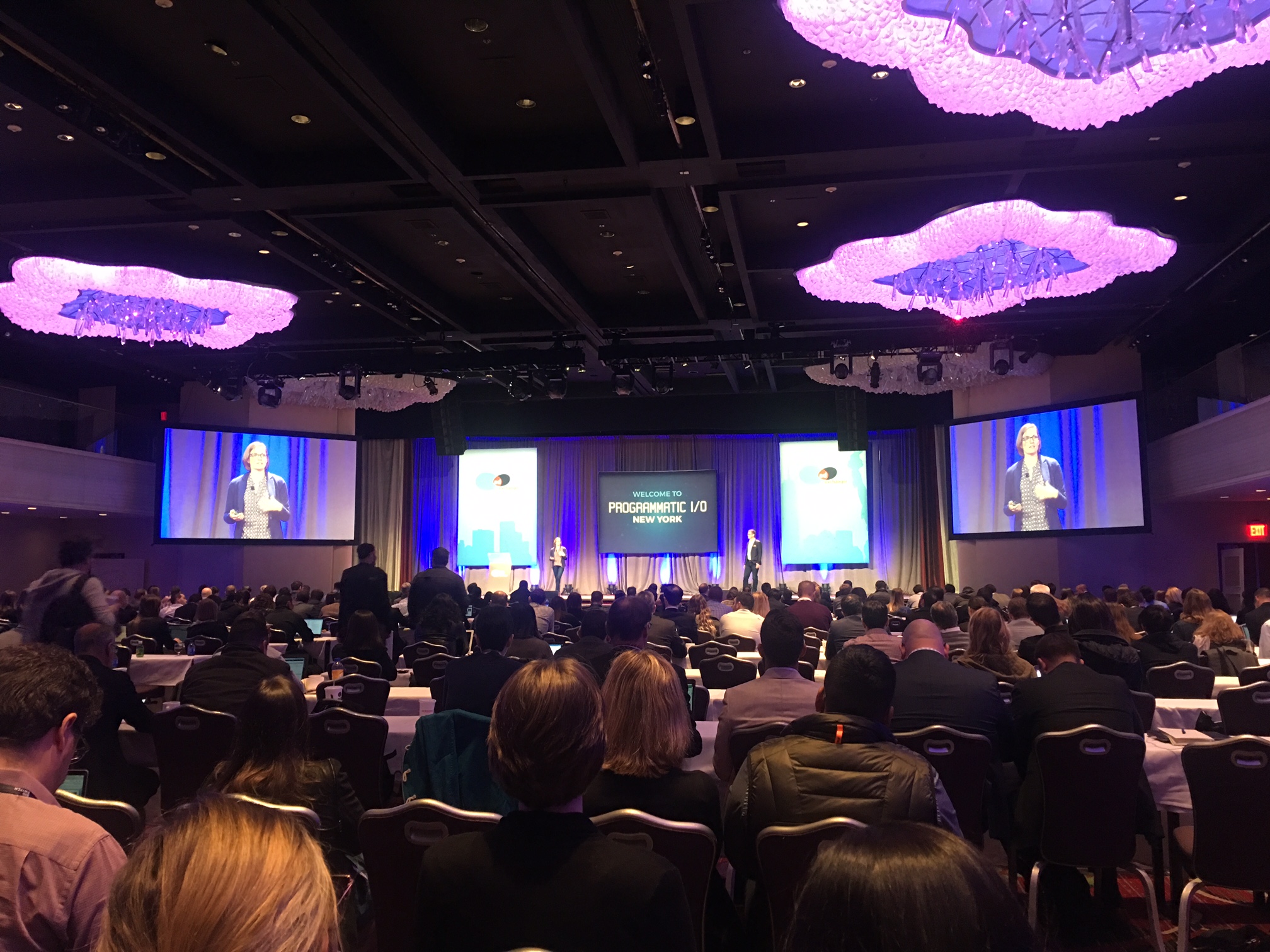Facebook’s absence, the EU’s impact and avoiding self affirmation: NYC’s Programmatic IO
PwC’s Ben Shepherd found himself in the Big Apple for AdExchanger’s Programmatic IO conference last week. Here are his six key takeouts from the event, including how the US compares to Australia, Facebook’s absence and how the industry is still getting stuck in the weeds.
Last week I was lucky enough to be in New York for the Programmatic IO conference. My aim was to come away with some new perspective, information and insight. Thankfully, it delivered.

Advertisers in the US are so much more involved than their US counterparts
This isn’t a new phenomenon, but advertisers in the US haven’t outsourced their entire media thinking to external parties. Many have people in senior media leadership positions and when you hear client side executives in the US speak about digital and programmatic it’s clear they are not just reciting buzzwords, they are active participants.
This isn’t as common in Australia. Two examples of this were evidenced at Programmatic IO. Firstly, JP Morgan’s Jake Davidow took the audience through how it scaled down the footprint of sites and apps the brand appeared on from 400,000 to 1,000 – from cutting off those with less than 1,000 impressions, cutting off those with no conversion activity, reviewing against existing blacklist (Davidow’s advice was that you can’t rely on people telling you “we have added it to the blacklist”), reviewing the remainder against a manual sense check and so on.
The result – less suppliers, better quality, improved viewability, improved conversion and more control. The other example was an executive from Dell who appeared, with the title ‘Dynamic Creative and Ad Fraud Manager’.
The impact of GDPR is significant
Sheila Colclasure from Acxiom appeared on stage to run through implications of the EU’s GDPR legislation and it was an eye opening session. With GDPR coming into place in May of 2018, it will have profound implications for the entire advertising technology ecosystem – particularly those companies that have no direct and/or explicit/consensual relationship with its users.
According to Colclasure, ad tech companies have three legal paths they can seek to explore to try and gain legality under GDPR – data collected as a requirement to perform a contact, data collected via express consent or data collected to fulfil a legitimate interest. The other challenge with GDPR is how it covers both collectors AND processors of data … and the liability imposed on each. She also talked about how legislators have given GDPR “sharp teeth”. How sharp? $20m euros or 5% of annual revenue, whatever is highest, is the scale of fine we are talking.
Legitimate supply-path optimisation is here
Supply-path optimisation was a recurring theme and was also a common discussion point in meetings I had in New York whilst there. Advertisers are demanding more emphasis on supply path optimisation as a way of getting to the best supply possible, disabling and deleting non value creating intermediaries, and as a proxy for the claimed optimisations and improvements of programmatic operators.
AppNexus believe it will be what causes the next shakedown of ad tech consolidation as it will demonstrate clearly who is delivering on the promises of speed, efficiency and access. For advertisers tools already exist which can demonstrate this – if, and only if – they have the ability to access their data via their agencies.
The absence of Facebook
It felt at times that every single company on the Lumascape was at the event and/or on the exhibition floor. The one exception appeared to be Facebook. Facebook had no attendees and no presenters. Not that Facebook has ever really embraced the external ad technology ecosystem, but their non presence at Programmatic IO was another demonstration that they are running their own race and not particularly keen to get into bed with others.
Second-party data
Second-party data is something more and more US advertisers seem to be embracing – for numerous reasons. The main one appears to be an appetite to better understand what constitutes a data set and how relevant it is for a brand. We’ve all seen media plans with data overlays with titles like ‘movie fanatics’ and ‘in market auto intender’ … but what behaviours make up this sort of profile? With third party sets good luck getting that information. Second party should be a way of better understanding the data as the original collector is who you are dealing with.
Secondly – some are doing it as a way of looking outside of Google and Facebook for value adding data. Lastly – many are looking at it as a way of activating their data instead of simply talking about data incessantly. Second party data marketplaces are emerging, the scale is low at present, but look at this to be an emerging area if companies can co-operate meaningfully to take advantage of it.
Programmatic as an industry can get stuck in the weeds
My motivation of attending Programmatic IO was as someone who exists outside of the programmatic industry I wanted to be in a position to communicate new developments to my clients in a way that was straight forward. My knowledge of programmatic is reasonable – I understand how it’s meant to work, how it actually works, and why – and even then I found at times the conference would sometimes sway into obsessing over either the transaction or the technology or straying into self affirmation.
My read on programmatic right now is the industry headlines are dominated by the more nefarious elements some parts of the industry have exploited and very very rarely about what this technology can enable. When the industry gets caught up on its own version of Inside Baseball, it will ensure that for the foreseeable future the focus will remain on the tactical bad as the industry sometimes forgets how to focus on strategic good.

Ben Shepherd is a director at PwC


FB doesn’t need to be there. They were all over dmexco in cologne last month tho – pushing messenger for business at their stand. Maybe they think the Europeans will go for it ?
Ben, while FB wasn’t actually there, I heard that they had a huge reach!